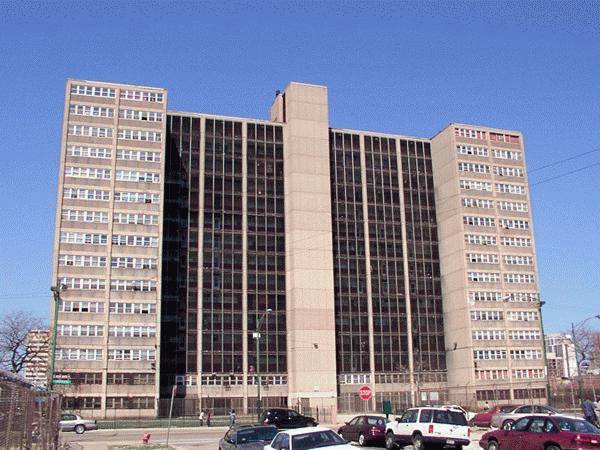If architecture is a part of the contextual condition which leads to pop, and therefore helps to dictate the course of music written in such a context...
 The broken glass, boarded up windows, and dark alleys along with authoritarian housing projects like Cabrini Green definitely portray the underpinnings (anger and poverty) of the early 90's gangsta rap movement.
The broken glass, boarded up windows, and dark alleys along with authoritarian housing projects like Cabrini Green definitely portray the underpinnings (anger and poverty) of the early 90's gangsta rap movement. On a lighter note, this is the elementary school that I attended. Parkside Elementary, Columbus, IN. Look at the beautiful grass, the trees, and the curvy entrance. A suburban dream. Nintendo music, while imported from Japan, is a kind of audible PCP, made to entrance children into their dreamy suburban existence. Even the MIDI structuring of the music suggests the modernist rigidity seen in Parkside's bay system.
On a lighter note, this is the elementary school that I attended. Parkside Elementary, Columbus, IN. Look at the beautiful grass, the trees, and the curvy entrance. A suburban dream. Nintendo music, while imported from Japan, is a kind of audible PCP, made to entrance children into their dreamy suburban existence. Even the MIDI structuring of the music suggests the modernist rigidity seen in Parkside's bay system.Or maybe that concept would be more fitting if you knew that there was a brutalist elementary school that was our rival. Southside Elementary, 1969 by Eliot Noyes.
I am not saying that Nintendo music was explicitly made in a conspiracy from the Japanese ministry of education and Nintendo, but the cultural constructs, which govern and tie together architecture, pop, music, government, etc. infuence music and architecture, and are also influenced by each.

1 comment:
Very interested in this architecture/music discussion. I'm quite into the idea of UK 'new town' music - you might want to check this post on my blog:
http://radonbrainstorm.blogspot.com/2008/10/blanqueford-regenerated.html
Definitely a post-punk thing in this instance. Also, I've heard Autechre described as 'brutalist' - what other examples are there of brutalist music?....GCGM
Post a Comment